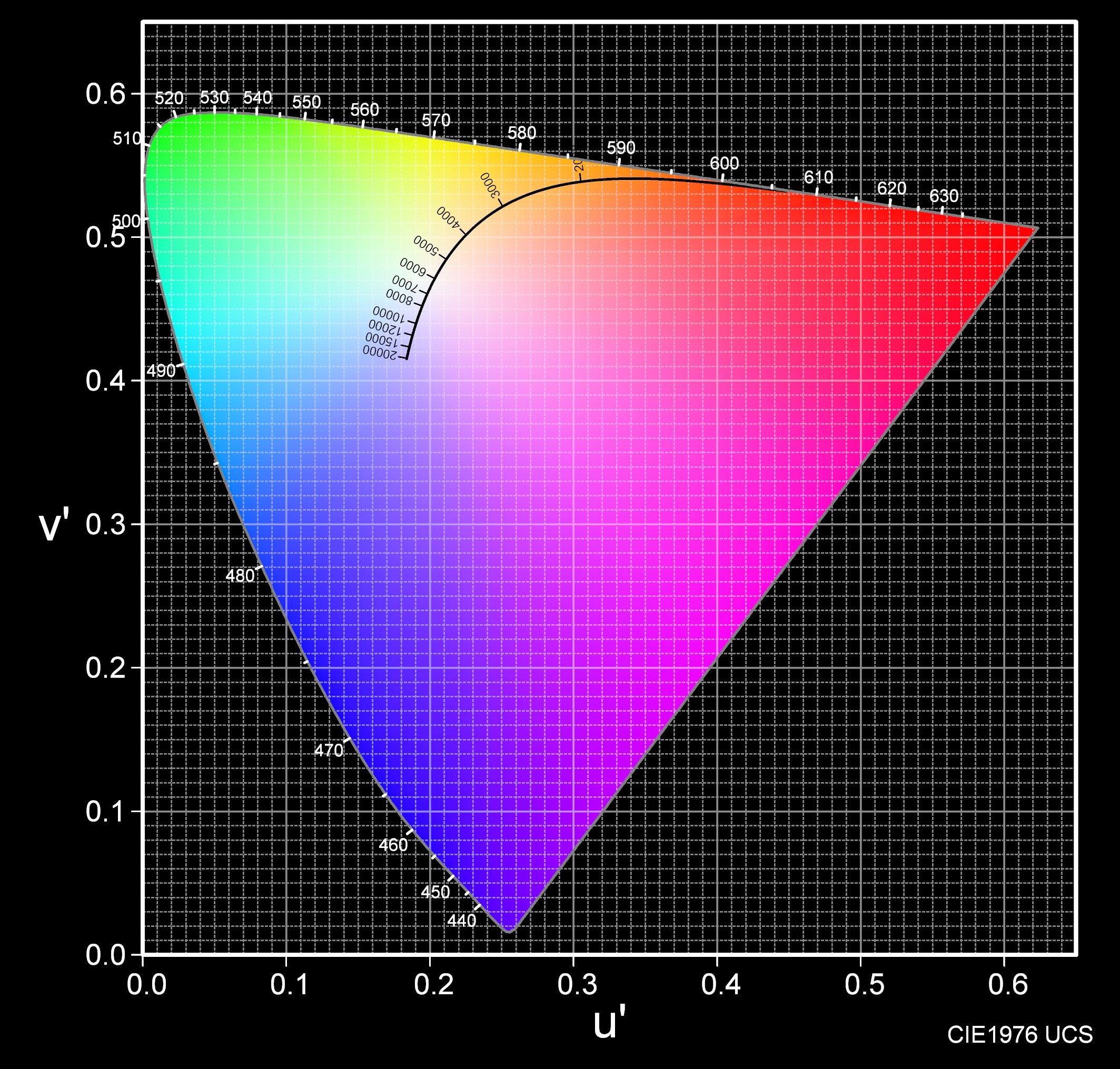Contents

Source: Wikipedia
Understanding Chromaticity in Color Spaces
Introduction to Chromaticity
In various technical fields, the representation of colors is crucial and often achieved through specific coordinate systems known as color spaces. These spaces typically have three dimensions, each corresponding to the different types of color receptors in the human eye, which are responsible for photopic vision. One dimension often represents luminance, which is the perceived brightness of a color. The other two dimensions define chromaticity, which is represented by two coordinate values.
Color Spaces and Chromaticity
The interpretation of chromaticity coordinates can vary significantly depending on the color space in use. For instance, the CIE chromaticity diagram is a widely recognized model that uses normalized coordinates derived from the XYZ values of the CIE XYZ color space. This diagram represents a two-dimensional slice of the three-dimensional color space for a specific brightness level.

Realizable vs. Imaginary Colors
It is important to note that not every combination of chromaticity coordinates corresponds to a physically realizable color. Some coordinate pairs might represent imaginary colors, which cannot be produced in the real world.
Effects of Luminance on Chromaticity
When chromaticity remains constant, altering the luminance only affects the brightness of the color without changing its inherent characteristics. For example, choosing a shade of white at high luminance can transform into gray or black as the luminance decreases, maintaining a neutral color impression throughout. Similarly, a dark red can become a bright red without altering its chromaticity.
Variations in Color Spaces
Not all color spaces include luminance as a coordinate. In RGB color spaces, the primary colors are red, green, and blue. To change only the luminance in such spaces, all coordinate values must be adjusted, meaning none of the coordinates can be isolated as pure chromaticity coordinates.
Monochromaticity vs. Chromaticity
The term “monochromaticity” is sometimes used but should not be confused with chromaticity. Monochromaticity refers to how close a light source is to being monochromatic, which is not quantitatively related to the concept of chromaticity.
Conclusion
Understanding chromaticity is essential for accurately representing and manipulating colors in various technical applications. By utilizing different color spaces and comprehending the role of luminance and chromaticity, one can achieve precise color representation and transformation.

Source: Orphek Reef Aquarium LED Lighting
Feel free to comment your thoughts.



